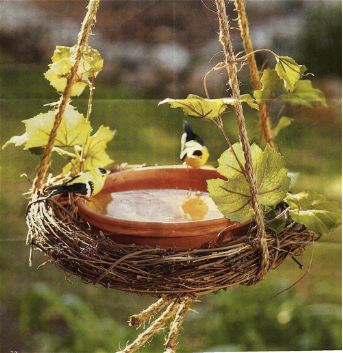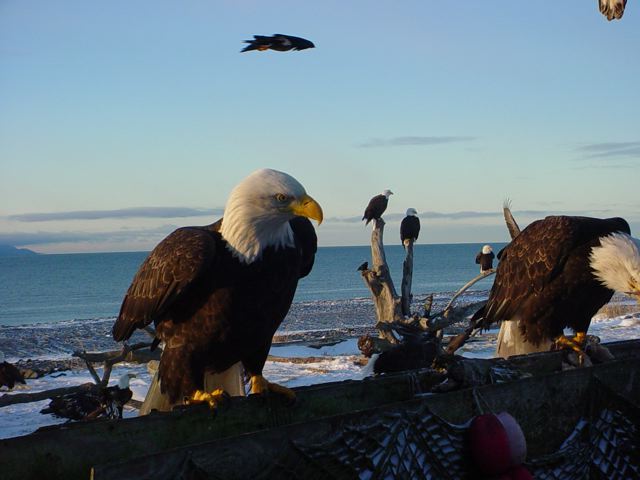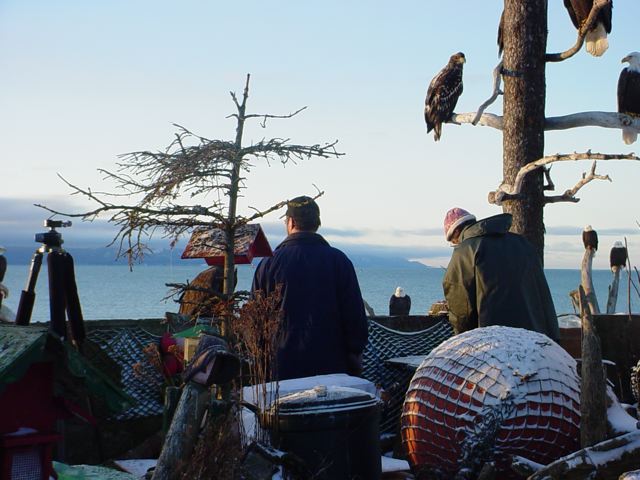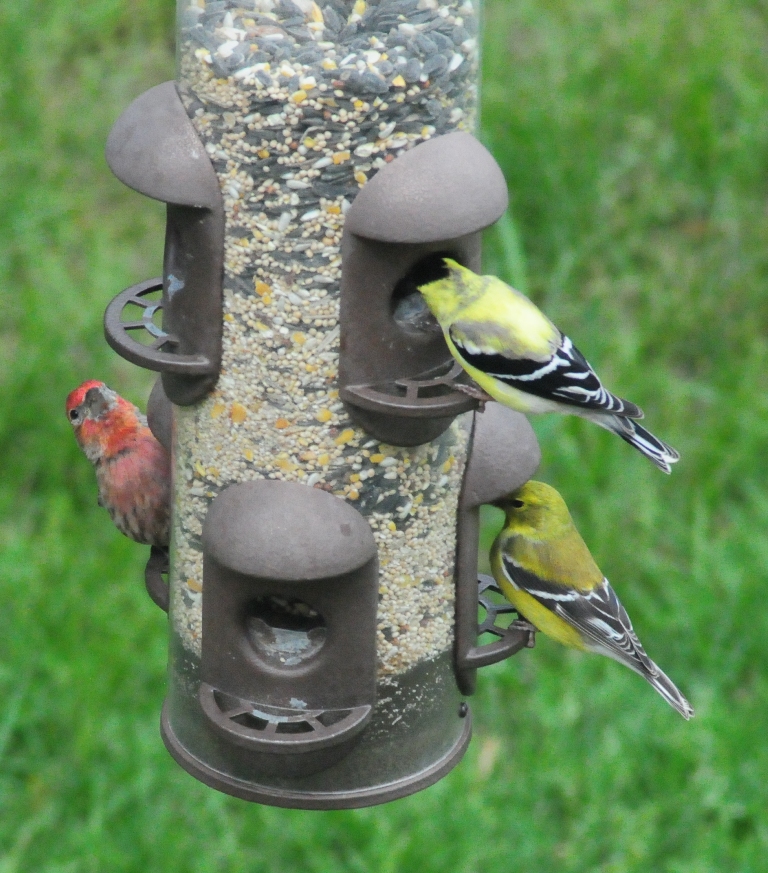-
Make a Hanging Bird Bath
Fresh water is hands-down the best way to entice wild birds to your yard. Birdbaths really do attract feathered friends and keep them coming back… even more so than houses or feeders! Baths can range from pedestal styles to ground or deck mounted models, and of course hanging bird baths. Found in materials like ceramics, stoneware, copper and glass, birdbaths range from simple to elaborate works of art for ultimate garden decor.
You needn’t spend a small fortune to have a bird bath though, any shallow container that holds water works just fine for birds. A pretty plant saucer will make a great bathing spot. If ground predators lurk in the area, it’s best to raise the bath off the ground. The most important thing is the water be fresh. What’s the best kind of birdbath? The one you are willing to maintain.
This clever hanging bird bath can be made very quickly and inexpensively. Necessary materials are rope, a plastic plant saucer and a grapevine wreath, the decorative leaves are strictly optional.
First cut three pieces of rope- 5 feet in leng
th. Knot them together at both ends, and place the grapevine wreath inside the ropes as shown here. Next place the saucer inside the wreath. If you opt for the decorative leaves, simply tuck them into the wreath and wind them around the ropes. Use more rope for hanging if necessary.
Fill with water and enjoy birds at their new refreshing oasis!
-
Finch Feeders and Bald Eagles?
Yes, this post was planned for Finch Feeders, but a I received a very cool email this morning from a friend. Now I’m not sure if this has circulated or saturated the media, but definitely worth posting!
Several months ago (January [in Oregon ]), the weather stayed so cold that the bald eagles were cruising over our houses looking for helpless cats to make a quick meal.
They could not access fish that were at the bottom of the river and had gathered together.
Some kind souls decided to feed the eagles down at Goose pit so they would survive the cold spell. They gathered fish and started feeding the group of eagles huddled on the shore.
The photos below show what happened.
A former teaching colleague took these photos in front of his home. Incredible!Feeding the Eagles!
A beautiful morning feeding the eagles, Jan. 2010
Once we started throwing out fish, they did not seem to fear us and word spread fast.
Eagles fighting for the fish. Jan. 2010
No zoom lens here, I was this close!
Here are the men who were feeding them. It was so amazing to get this close!
It was not too long ago that the American Bald Eagle was an endangered species.
-
Colors Are Changing at the Finch Bird Feeder
When one thinks of finches, it’s thistle or nyjer seed that usually comes to mind. This is a staple for finches, especially American Goldfinches. Here at this tube feeder, it seems goldfinches and a purple finch are chowing down on a standard seed mix. Both will feed on sunflower seed, and possibly some other goodies in the mix.
No matter what type of seed your finch bird feeder may be offering, you can count on the fact that mother nature takes her course regardless. Very soon, the vibrant yellow feathers we’ve seen all summer on sweet goldfinches will give way to a more olive-drab color. It’s the second molt of the season for goldfinches, when nature sheds the old tattered feathers and outfits birds with a new set to help brave the winter.
Cardinals are also going through the molting process now, and may appear a little scrawny or sickly-looking. Know that they’re healthy and just preparing to suit up in their vibrant red plumage.
The molting process of fall also signals the migration of many songbirds. Vireos, Warblers and more are on their way to southern wintering grounds. These birds need fuel and refreshments along the way in order to stay fat for the long journey. Placing suet out now is a great way to help migratory birds, with a high fat and protein snack that packs in the calories. Fresh water also helps migratory songbirds on their journey. A birdbath may serve as an oasis to some of these weary travelers. Keep an eye out for visitors to your yard…you never know who may stop by!








